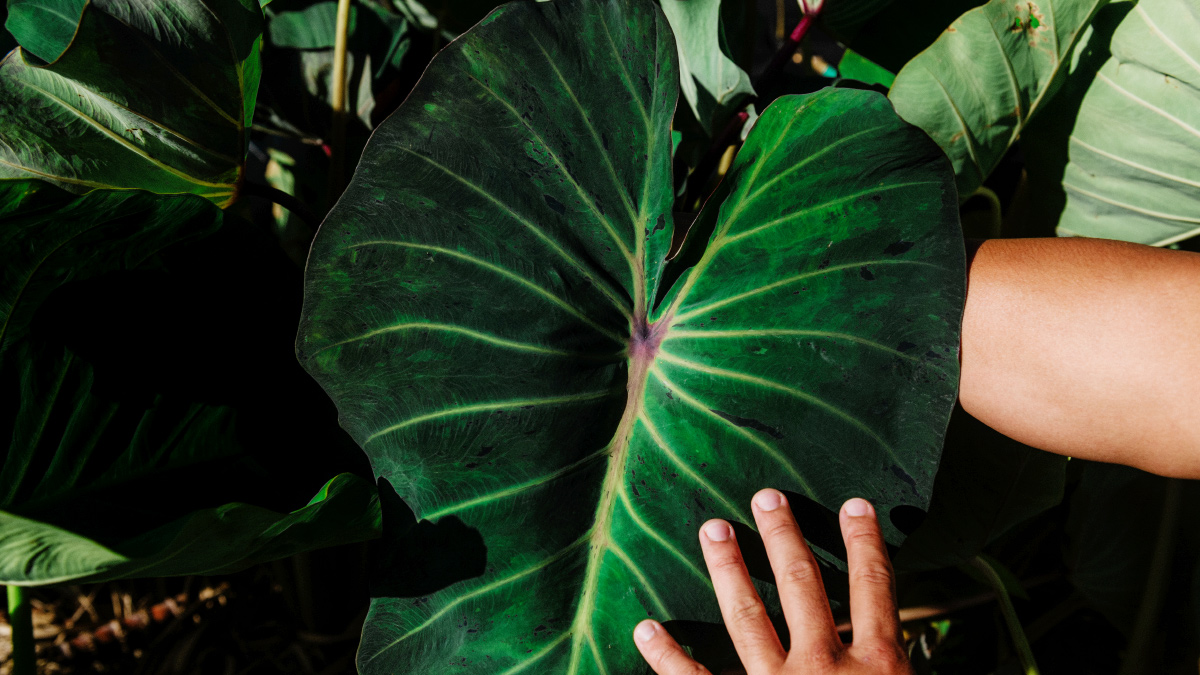Under the green eaves of the portable classrooms at Kapōlei Middle School, sneakers and rubber slippers are strewn along a shaded walkway. The shoes’ owners, the seventh and eighth-grade students of Kula Kaiapuni ‘o Kapōlei, a Hawaiian language immersion school located on the campus, shuffle barefoot across a lauhala mat. The students fix their eyes upon Kumu (teacher) Kade “Hema” Yam-Lum and Kumu Keonaona Kahawai-Javonero with an unspoken admiration; they offer morning greetings as well as occasional jabs and laughs—all of which are spoken melodically in ‘ōlelo Hawaiʻi (Hawaiian language).
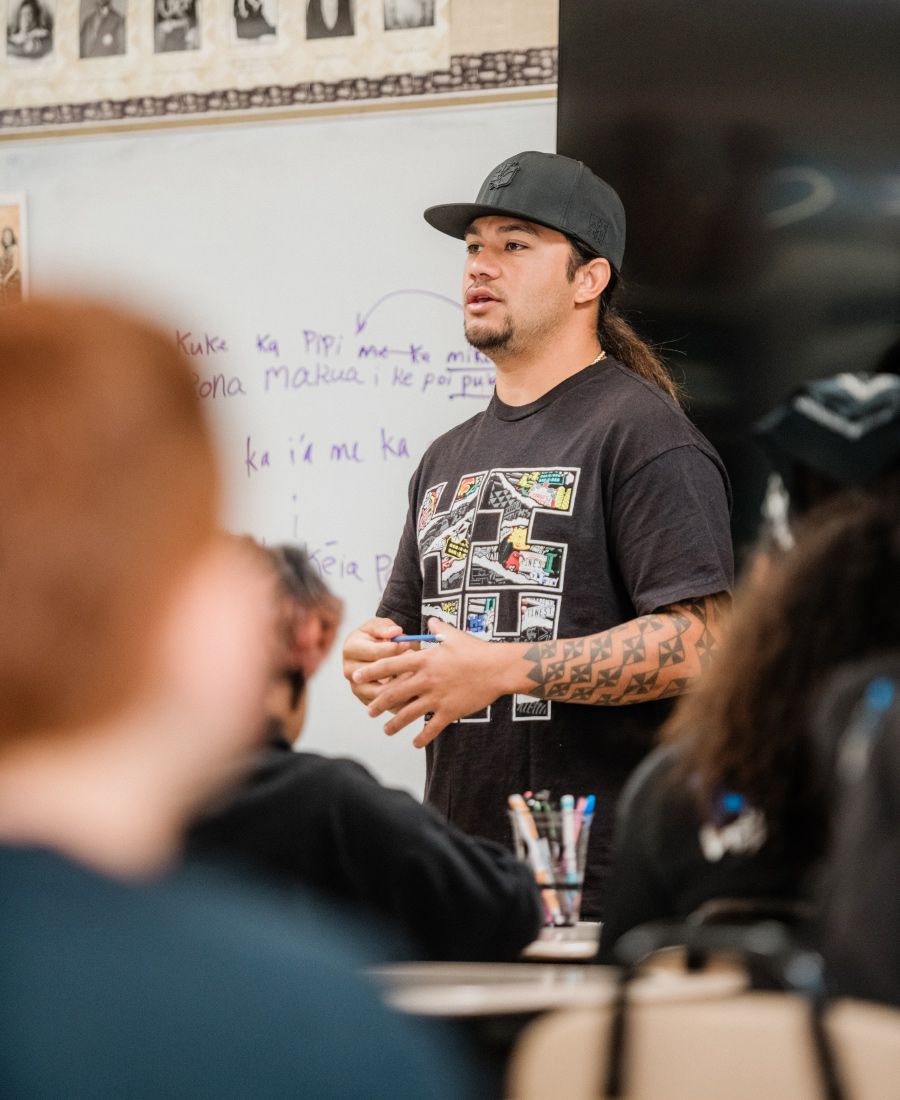
Here, at Kula Kaiapuni ‘o Kapōlei, class feels less conventional and more communal, a shared learning experience centered on the stewardship of ‘ōlelo Hawaiʻi. Throughout the school day, students speak ‘ōlelo Hawaiʻi while studying a standard curriculum of history, math, science, and English through a distinctly Hawaiian lens.
The learning continues outdoors, too, as the haumāna (pupils) tend a garden of banana, sugar cane, kī (ti leaf), coconut, and ginger—all canoe plants, introduced to Hawaiʻi by early Polynesian settlers for food, medicine, and material resources.
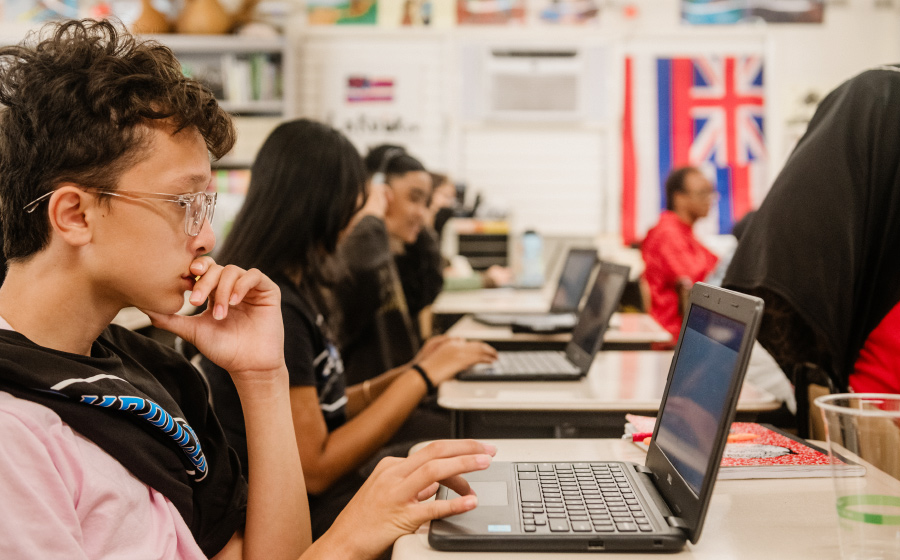
Such immersion in both language and culture has not only been key for students in connecting to their identity as Kānaka Maoli, but also vital for the preservation, promotion, and celebration of Hawaiian traditions. In this Voices selection, we hear from a few students who share what it means to speak ‘ōlelo Hawaiʻi and how programs like Kula Kaiapuni ‘o Kapōlei empower them to carry forward their cultural legacy.
"Ōlelo Hawaiʻi au ma ke kula i kēlā lā me kēia lā. Makemake wau e komo nui mai ka po‘e i kēia papahana, he mea e pōmaika‘i maoli ai au. He mea maika‘i nō ke a‘o ‘ia kamali‘i i ko lākou mo‘omeheu.”
Kanui, papa 8
“I speak ‘ōlelo Hawaiʻi every day at school. I’d like for more people to come to this program, it has done so much for me. It’s good for kids to learn about their culture.”
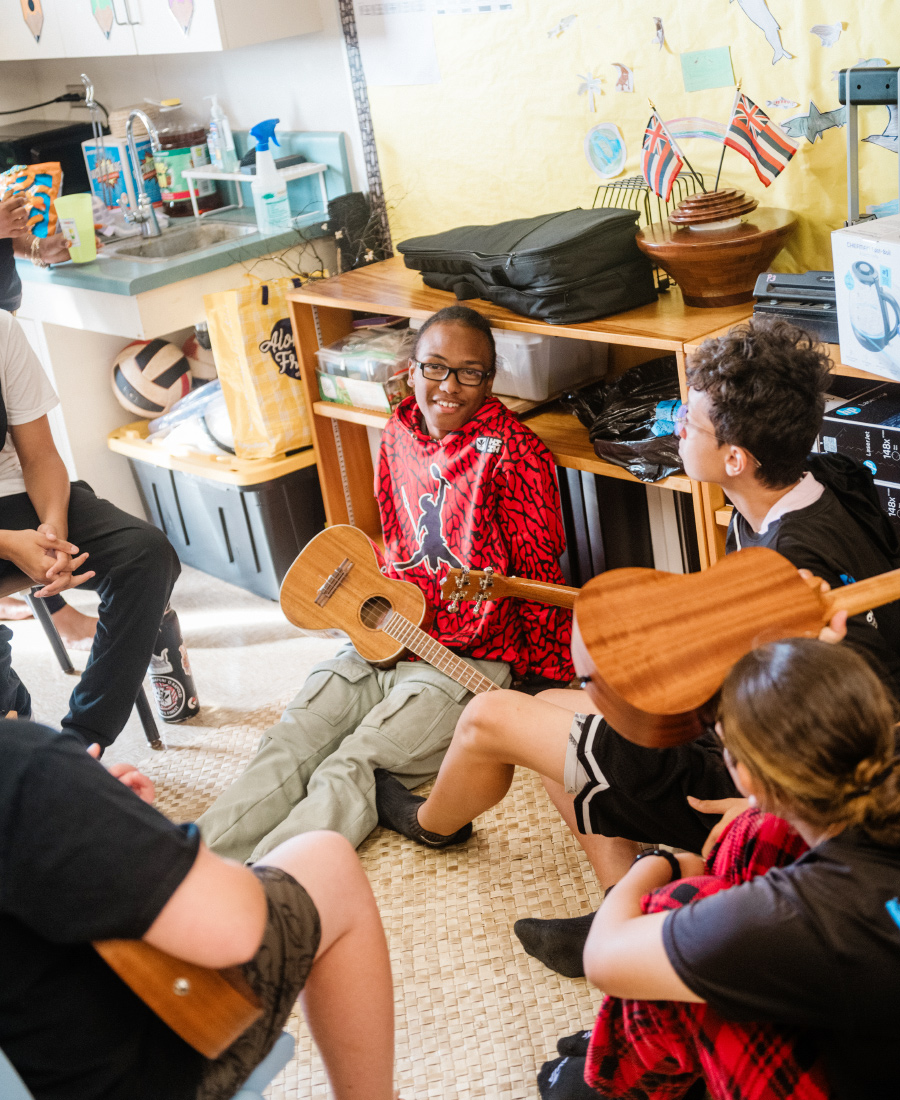
"Ma ke Kula Kaiapuni o Kapōlei, nui a‘e ka mea i a‘o ‘ia au ai ma mua o ka mea e a‘o ‘ia ma ke kula ‘ōlelo Pelekane. Makemake wau e ‘ike mai kānaka, ‘a‘ole ka ‘ōlelo Hawaiʻi i make, ke ‘ōlelo mau ‘ia nei nō i kēia mau lā. He ‘ōlelo Hawaiʻi au ma ke kula, i ka ‘ʻohana ho‘i. He pōmaika‘i ka mākaukau i ka ‘ōlelo a ka po‘e kūpuna i ‘ōlelo ai.”
‘A‘ali‘i, papa 8
“At Ke Kula Kaiapuni ‘o Kapōlei, I‘ve learned more than when I was at an English-speaking school. I would like others to know that ‘ōlelo Hawaiʻi is not a dead language, it is still used to this day. I speak Hawaiian at school and to my family. It is good to know the language your ancestors spoke.”
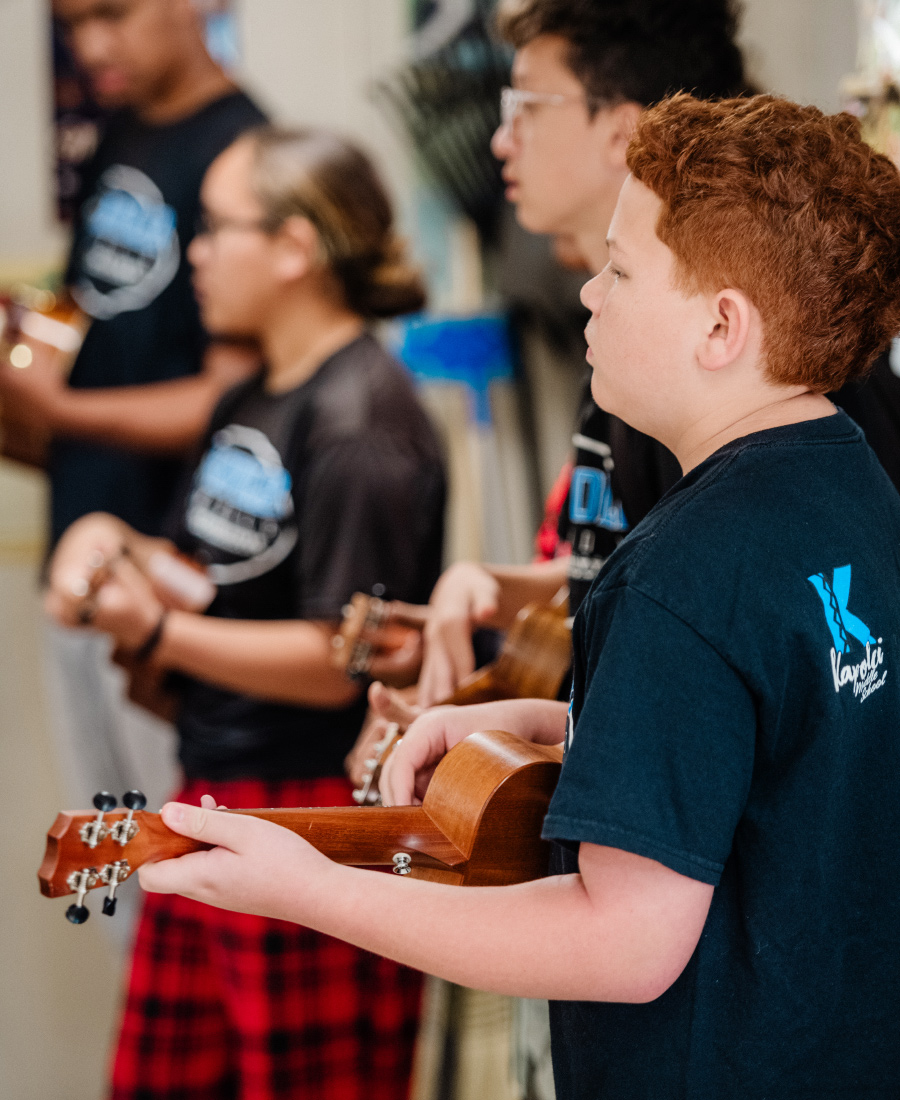
"Puni au i ka pilikanaka, no ka mea, a‘o ‘ia mākou i ko ka wā i hala, e la‘a nā ali‘i a me nā akua o Hawaiʻi, puni ho‘i au i ke akeakamai, no ka mea he le‘ale‘a ke alu like ‘ana. Ha‘aheo au i ka hele ‘ana i ke kula kaiapuni. ‘A‘ole pēlā ko‘u makua kāne me ko‘u mau kūpuna, ‘o wau na‘e, he wahi nō ko‘u e a‘o ‘ia ai i ka ‘ōlelo Hawaiʻi.”
Koa, papa 7
“I enjoy pilikanaka (social studies) because I learn about the past, such the ali‘i and akua of Hawaiʻi, and I love akeakamai (science) because of the le‘ale‘a (fun, or amusment) in how we work as a hui. I’m proud to be attending a kula kaiapuni. Unlike my makua (father) and kupuna (elders), I have the chance to learn in Hawaiian.”
